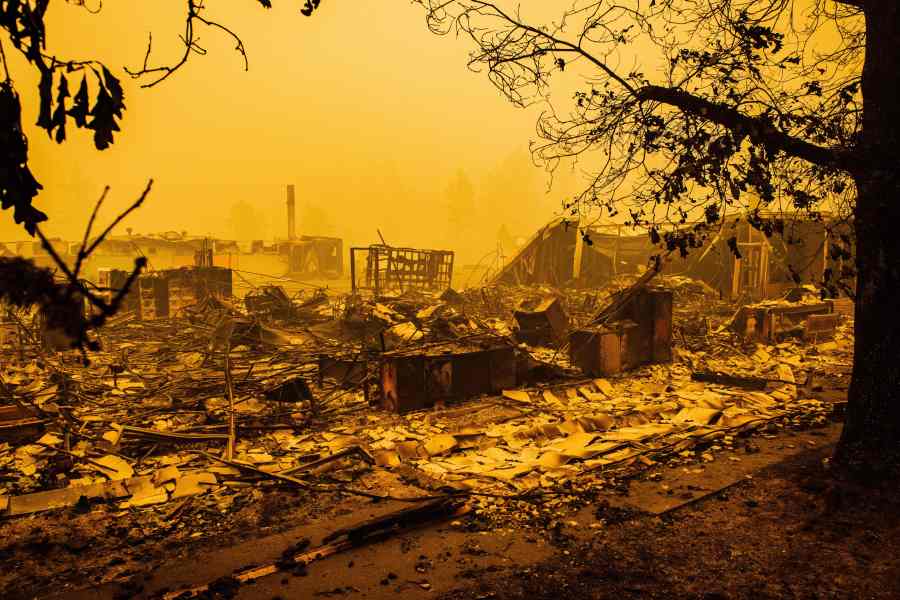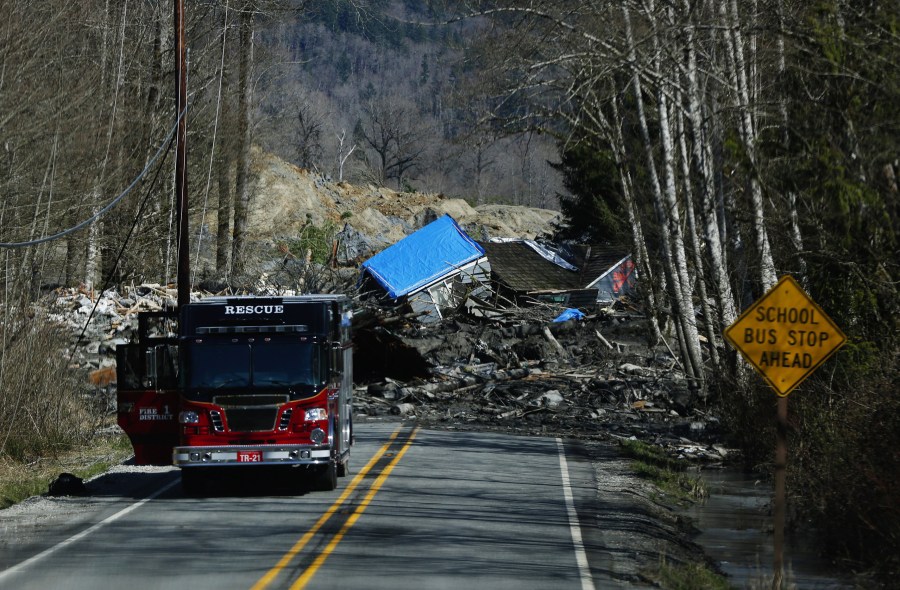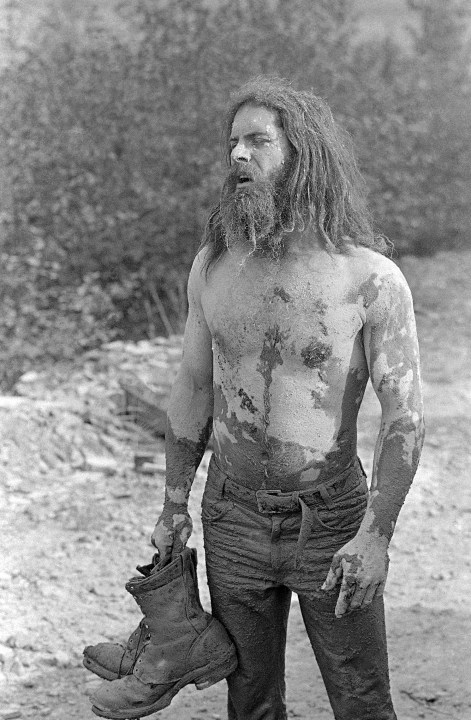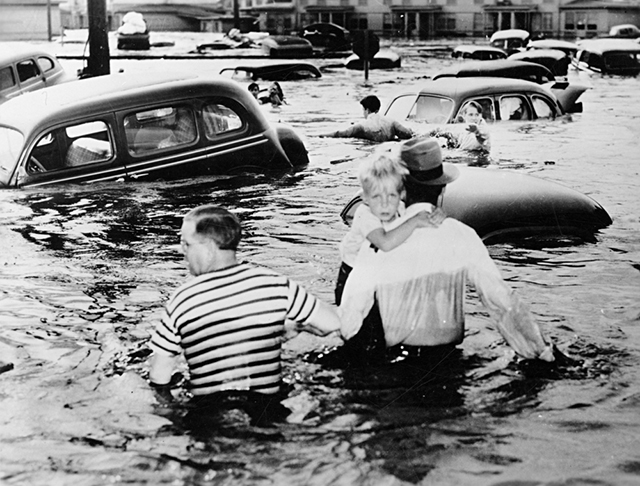PORTLAND, Ore. (KOIN) – While the 1972 Vancouver tornado that killed 6 people remains the deadliest tornado on record to hit west of the Rocky Mountains, it doesn’t really come close to the deadliest disasters in the Pacific Northwest since 1900.
With the help of KOIN 6 Meteorologist Kelley Bayern, we’ve compiled a list of the 15 worst individual weather events and other disasters to hit the region in the last 122 years.
1972 Vancouver Tornado
- April 5, 1972
- 6 Dead
An early afternoon storm system swept through the region, spawning a tornado that first touched down just west of Portland International Airport before crossing the Columbia River into Vancouver. It remains the deadliest tornado ever recorded west of the Rocky Mountains.
1965 Seattle Earthquake
- April 29, 1965
- 7 Dead
The 6.7 quake struck the Puget Sound region just before 8:30 a.m. There are reports that it was felt as far south as the Portland metro area. Three people were killed in the Duwamish area of Seattle and four other deaths were the results of heart attacks blamed on the quake. A pair of Boeing plants were badly damaged and the State Capitol in Olympia suffered a crack in the dome.
1949 Olympia Earthquake
- April 13, 1949
- 8 Dead
Just before noon, a 7.0 magnitude quake with an epicenter near Olympia was felt as far south as Central Oregon and as far east as western Montana. Experts estimate some $5 million in destruction was done, including noticeable damage to almost every building in Seattle’s Pioneer Square.
Willamette Valley Flood
- Late January through mid-February 1996
- 8 Dead
A weather system that started as a cold spell with heavy mountain snow, quickly warmed up and brought record rainfall to most of the Portland metro area. By the time it was over, the Willamette River crested almost 11 feet above flood stage; nearly flowing over the seawall and flooding Tom McCall waterfront park. Subsequent news reports put the damage done at half a billion dollars.
2020 Oregon Wildfires
- September 2020
- 11 Dead
An already destructive wildfire season in the Pacific Northwest turned historic when hurricane-force winds crested the Cascades and hit several established fires on Labor Day weekend. The firestorm that followed blackened more than 1 million acres in a matter of days and wiped out several communities.

(Photo by Kathryn ELSESSER / AFP via Getty Images)
Christmas Flood
- December 1964-January 1965
- 17 Dead
In the weeks surrounding the Christmas Holiday, heavy rains triggered massive flooding from the western edge of the Columbia River basin south through most of Northern California. Hundreds of people were trapped in Yamhill County. Coastal towns took the brunt of the damage as ports were destroyed in Gold Beach and Brookings. And, the Willamette River topped out 12 feet above flood stage in downtown Portland.
Oso Landslide
- March 22, 2014
- 43 Dead
A wet early spring gave way to several days of torrential rain culminating in the collapse of an entire hillside just north of highway 530. The massive slide covered the highway and destroyed nearly 50 homes in and around Oso, Washington. The vast majority of the people who died were buried.

(AP Photo/The Seattle Times, Lindsey Wasson, Pool)
Columbus Day Storm
- October 12, 1962
- 46 Dead
When Typhoon Freda weakened slightly over the Pacific ocean, the danger wasn’t over. The remnants of the storm spawned an extratropical cyclone before slamming into the coast. It brought wicked wind and heavy rain from Northern California, north into British Columbia. Winds as high as 116 miles-per-hour were recorded in Portland. Most of the victims died in mudslides.

(Oregon Historical Society)
Mount St. Helens Eruption
- May 18, 1980
- 57 Dead
More than 40 years later, Mount St. Helens remains the deadliest volcanic eruption in U.S. history. Back-to-back eruptions combined with a 5.1 magnitude earthquake caused a massive landslide that collapsed the entire northern face of the mountain and create a towering plume of ash that was visible from Seattle to Salem. Ash from the eruption buried central Washnigton and eventually spread across the entire country.

(AP Photo/Gary Stewart)
Yacolt Burn
- September 8-13, 1902
- 65 Dead
An unusually dry summer paved the way for a handful of human-caused fires burning in the Columbia River Gorge to combine into a fast-moving fire storm. By the time flames subsided, a half-million acres had been blackened from Bridal Veil to Cascade Locks and across the river to Yacolt, Washington. 38 of the people who were killed died in the Lewis River area.
Great Fire of 1910
- August 19-21, 1910
- 87 Dead
In what is also known as the “Big Blowup,” dozens, if not hundreds of smaller fires burning in Northern Idaho and Western Montana rode fierce winds and joined to decimate almost 3 million acres in a matter of three days. Most of the dead were firefighters caught behind the lines near Wallace, Idaho. The firestorm destroyed hundreds of structures, including several entire towns, and wiped out an estimated $1 billion worth of timber
Wellington Avalanche
- February 28, 1910
- 96 Dead
In the last week of February, a severe blizzard parked over North-central Washington and, at some points, dumped more than a foot of snow per hour on the region. As warmer weather blew in, a bolt of lightning triggered a massive avalanche that crashed into the Wellington Train Depot where two trains had been forced to stop because of the heavy snow. Both were wiped out by the slide, killing some of the passengers and almost all of the crew as they slept.
Columbia River Flood / Vanport Flood
- May 1948
- 102 Dead (estimated)
Heavy rains during the second half of May pushed most of the tributaries to the Columbia River Basin well past their banks. As temperatures warmed, the rain water combined with snow melt to swell the Columbia River and flood cities and towns throughout the watershed. Dozens of deaths from Northwestern Montana through the Tri-Cities are blamed on the storm. The biggest bulk of the death toll came when waters buried Vanport, Oregon, killing 16 people.

(Oregon Historical Society).
Heppner Flood
- June 14, 1903
- 247 Dead
A series of strong, quick-moving thunderstorms brought heavy rain that quickly overwhelmed tributaries of Willow Creek and sent flash floods racing through town. By the time the water receded, a quarter of Heppner’s buildings had been wiped out taking roughly a quarter of the town’s population with them. Historians estimate the damage at $600,000, which would be nearly $18 million today.
The Heat Dome
- June 26-July 3, 2021
- 1400 (estimated) Dead
A strong ridge of high pressure parked over the entire Northwestern United States and Southwestern Canada for more than a week, pushing temperatures beyond 110 degrees in several places. Portland set back-to-back-to-back high temperature records on Saturday, June 26th (108 degrees), Sunday June 27th (112 degrees), and Monday, June 28th (116 degrees). Most of the deaths blamed on the historical heat wave occurred in British Columbia where more than 600 people died. 112 died in Washington. 116 died in Oregon.

(Photo by Nathan Howard/Getty Images)
